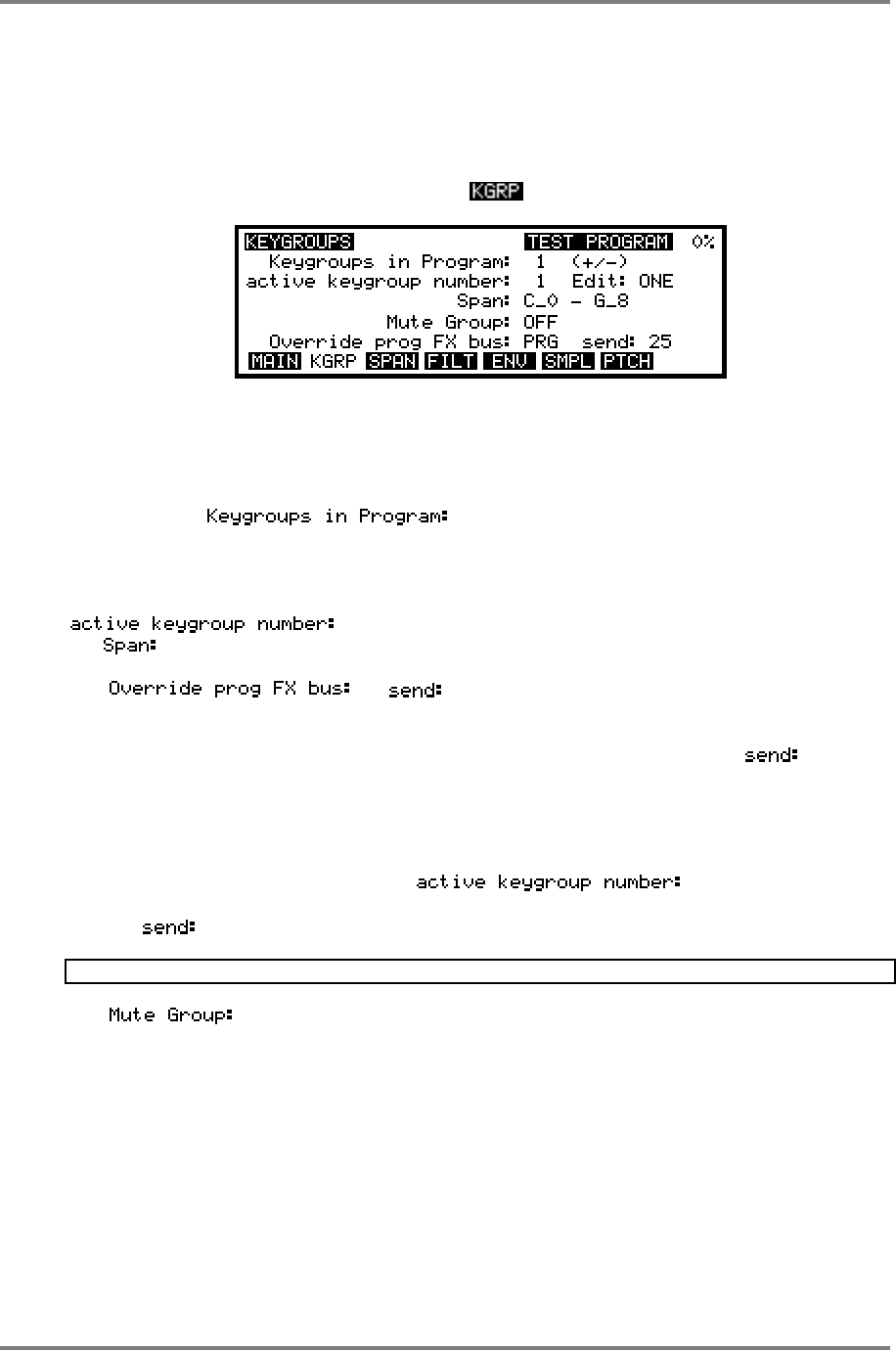
EDIT PROGRAM - SINGLE
Page 90 CD3000XL OperatorÕs Manual
KEYGROUP PARAMETERS - CREATING KEYGROUPS
All the previous parameter descriptions have so far been concerned with global or master
changes to the program - i.e. not keygroup specific. This next section delves deeper into
PROGRAM EDIT and examines the individual keygroup parameters. These include keyboard
mapping, sample assignment and, of course, the filters and envelope generators.
In the main PROGRAM EDIT screen, pressing will display this screen:
This gives you access to the keygroup pages.
The primary function of this page is to create and copy keygroups although it is also possible to
set key ranges (although this is possibly best done in the SPAN page - see later).
The parameter, , shows you how many keygroups currently exist in
the selected program. To copy keygroups, simply move the cursor to this field and press the
-/< key as many times as you need keygroups. The amount you have copied will be shown in
this field. To delete keygroups, simply press the +/> key. If you already have some keygroups
in the program and you specifically want to copy, say, keygroup 5, move the cursor to the
field and select 5. You may also set the keygroups note range in
the field but you may prefer to use the graphically assisted SPAN page for that.
The and parameters allow you to send individual keygroups
to the effects by overriding the main program’s effects routing. The default will be PRG (i.e. the
routing is using the program’s effects buss selection) but you may also select OFF (i.e. the
selected keygroup is not routed to the effects), FX1, FX2, RV3 or RV4. The parameter
allows you to set the amount of effect for each keygroup. In this way, you can, for example,
send individual drums in different amounts to the effects. Furthermore, each drum could be
routed to a different effect (i.e. bass drum to a tight gated reverb, snare to a large hall, toms to a
medium hall, etc.).
To set this, select the keygroup in the field (or press and hold
the EDIT key and play the appropriate note) and route that keygroup as appropriate and set a
suitable level.
NOTE: Of course, these parameters are only relevant if the EB16 effects board is fitted.
The function allows you to group several keygroups together so that they are
essentially monophonic. The main reason for this is for drums where sometimes you want a
sample to stop playing when another is played.
For example, you would want a closed hi-hat to stop an open hi-hat. Similarly, you may want an
open triangle to be cut off by a closed triangle. To do this, simply assign all the relevant
keygroups to the same Mute Group. For example, if all your hi-hats are in keygroups 3-6, assign
those keygroups to, say, Mute Group 1. All other keygroups will be unaffected but all those in
mute group 1 will be mutually exclusive - that is, if one is sounding when another is played, it will
be cut.


















